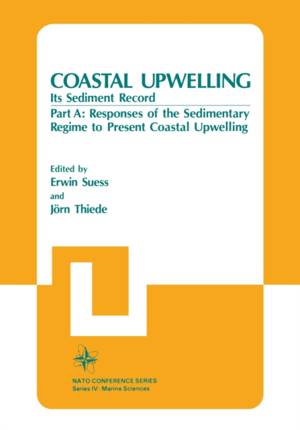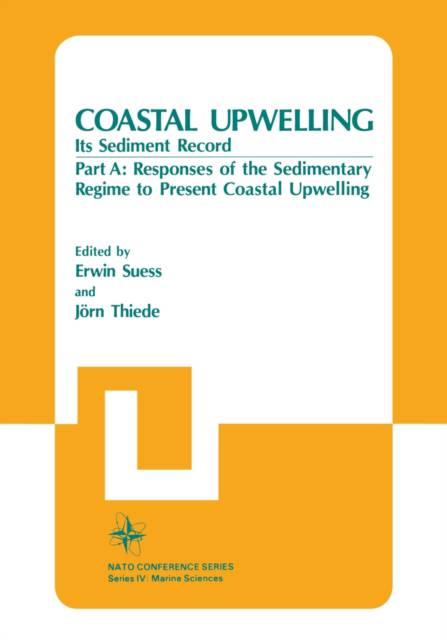
- Afhalen na 1 uur in een winkel met voorraad
- Gratis thuislevering in België vanaf € 30
- Ruim aanbod met 7 miljoen producten
- Afhalen na 1 uur in een winkel met voorraad
- Gratis thuislevering in België vanaf € 30
- Ruim aanbod met 7 miljoen producten
Zoeken
Coastal Upwelling Its Sediment Record
Part A: Responses of the Sedimentary Regime to Present Coastal Upwelling
Erwin Suess, Jörn Thiede
€ 167,95
+ 335 punten
Omschrijving
NATO Advanced Research Institutes are designed to explore unre- solved problems. By focusing complementary expertise from various disciplines onto one unifying theme, they approach old problems in new ways. In line with this goal of the NATO Science Committee, and with substantial support from the u.s. Office of Naval Research and the Seabed Assessment Program of the U. S. National Science Founda- tion, such a Research Institute on the theme of Coastal Upwelling and Its Sediment Record was held september 1-4, 1981, in Vilamoura, Portugal. The theme implies a modification of uniformitarian thinking in earth science. Expectations were directed not so much towards find- ing the key to the past as towards exploring the limits of interpret- ing the past based on present upwelling oceanography. Coastal up- welling and its imprint on sediments are particularly well-suited for such a scientific inquiry. The oceanic processes and conditions characteristic of upwelling are well understood and are a well- packaged representation of ocean science that are familiar to geolo- gists, just as the magnitude of bioproduction and sedimentation in upwelling regimes --among other biological and geological processes-- have made oceanographers realize that the bottom has a feedback role for their models.
Specificaties
Betrokkenen
- Auteur(s):
- Uitgeverij:
Inhoud
- Aantal bladzijden:
- 604
- Taal:
- Engels
- Reeks:
Eigenschappen
- Productcode (EAN):
- 9781461566533
- Verschijningsdatum:
- 22/12/2012
- Uitvoering:
- Paperback
- Formaat:
- Trade paperback (VS)
- Afmetingen:
- 178 mm x 254 mm
- Gewicht:
- 1070 g

Alleen bij Standaard Boekhandel
+ 335 punten op je klantenkaart van Standaard Boekhandel
Beoordelingen
We publiceren alleen reviews die voldoen aan de voorwaarden voor reviews. Bekijk onze voorwaarden voor reviews.











